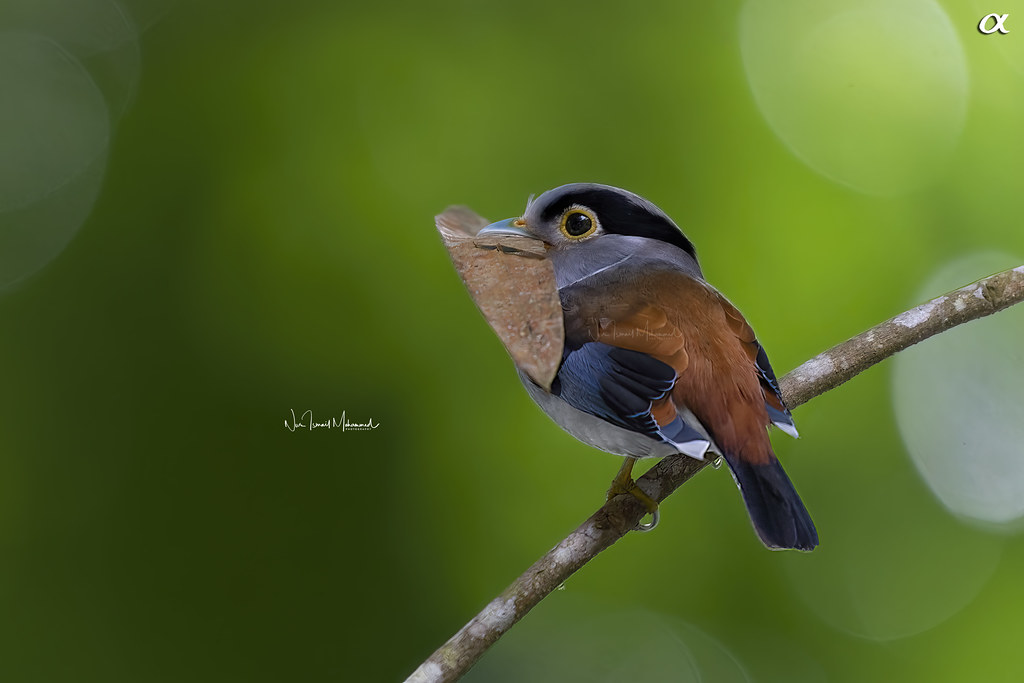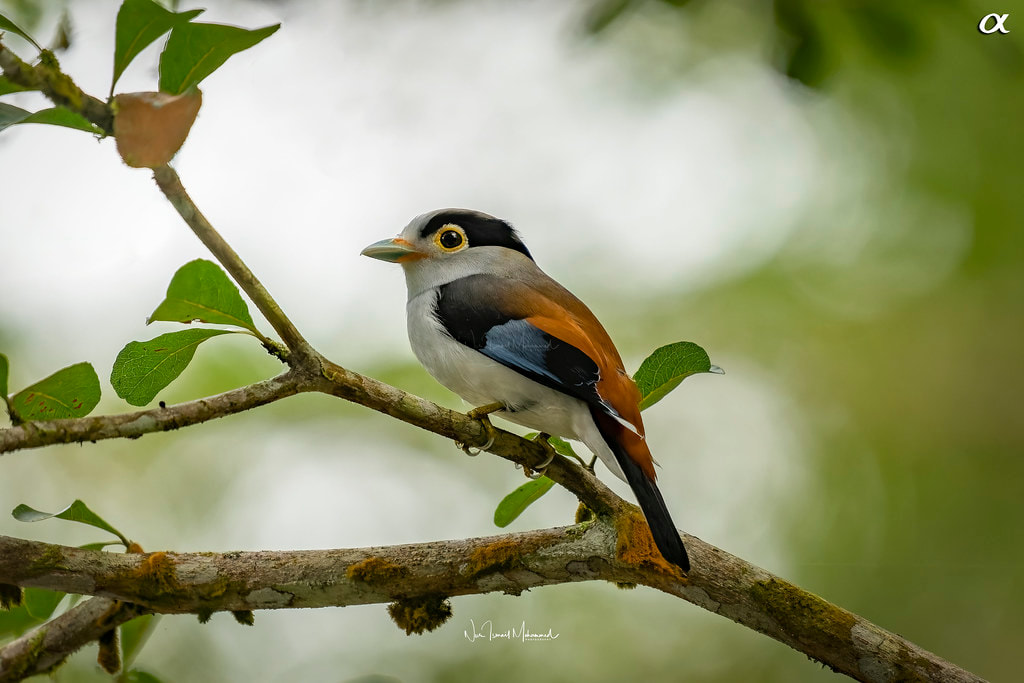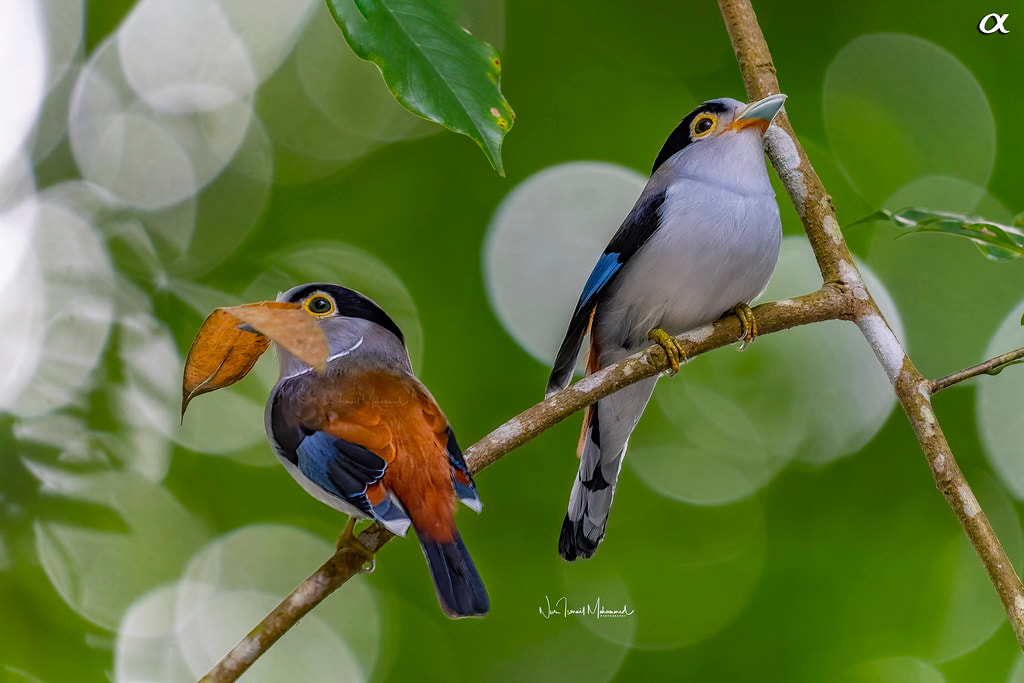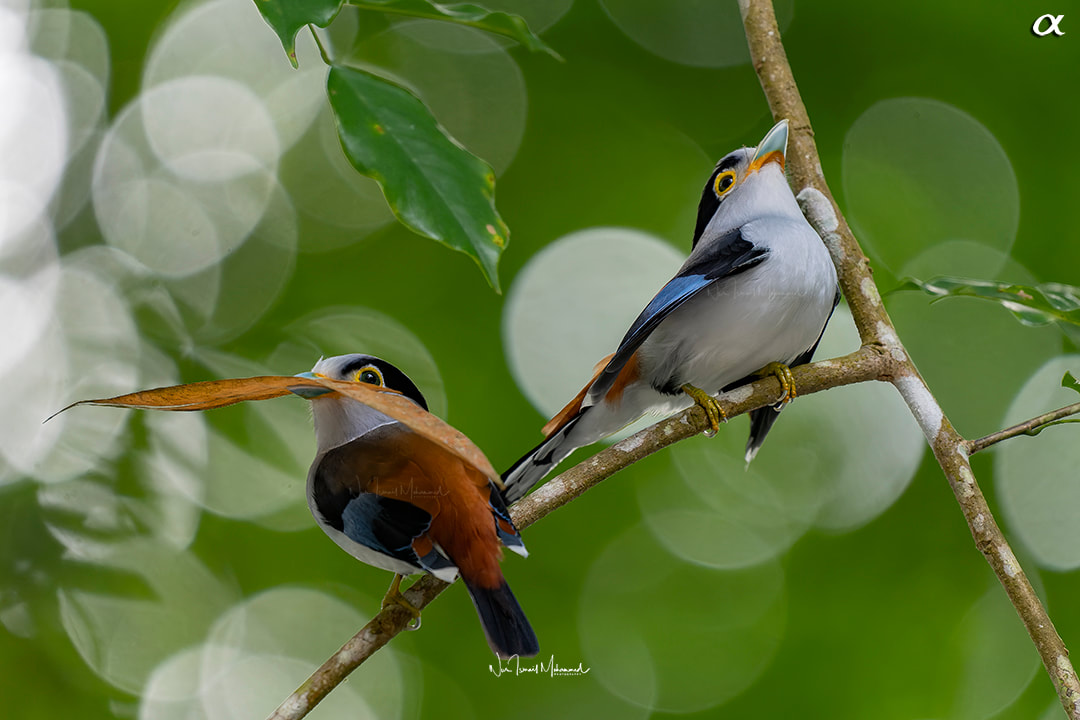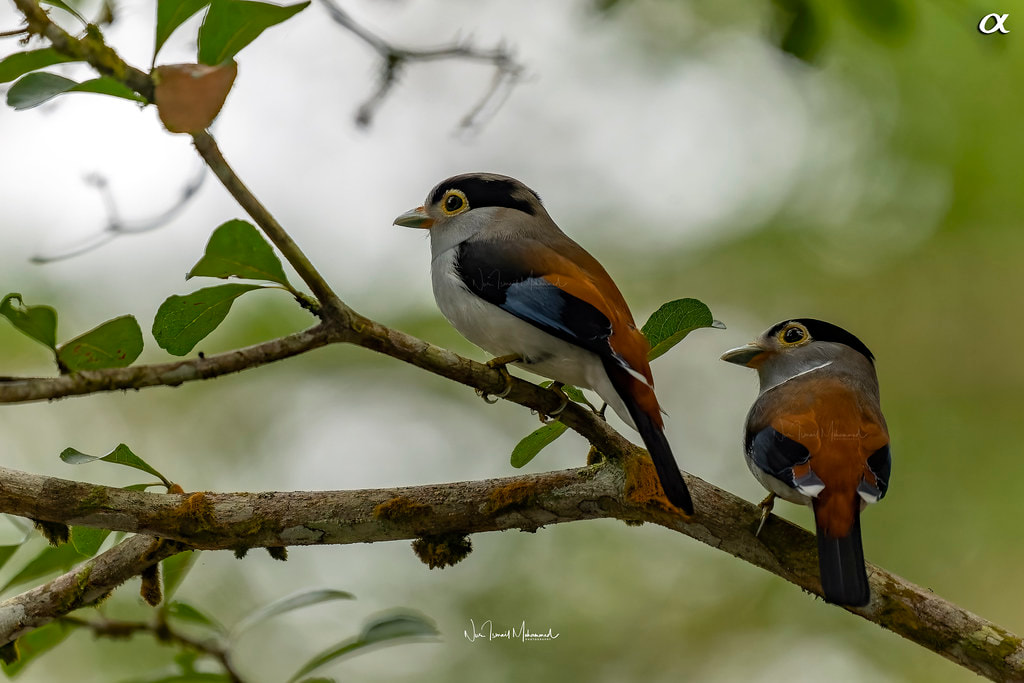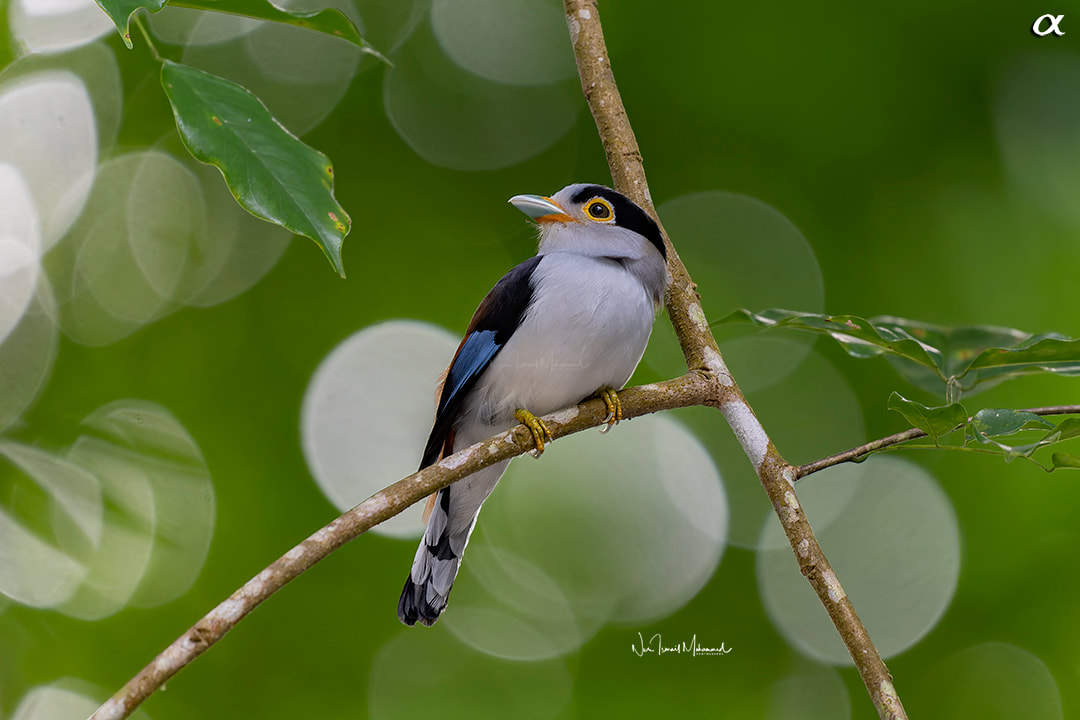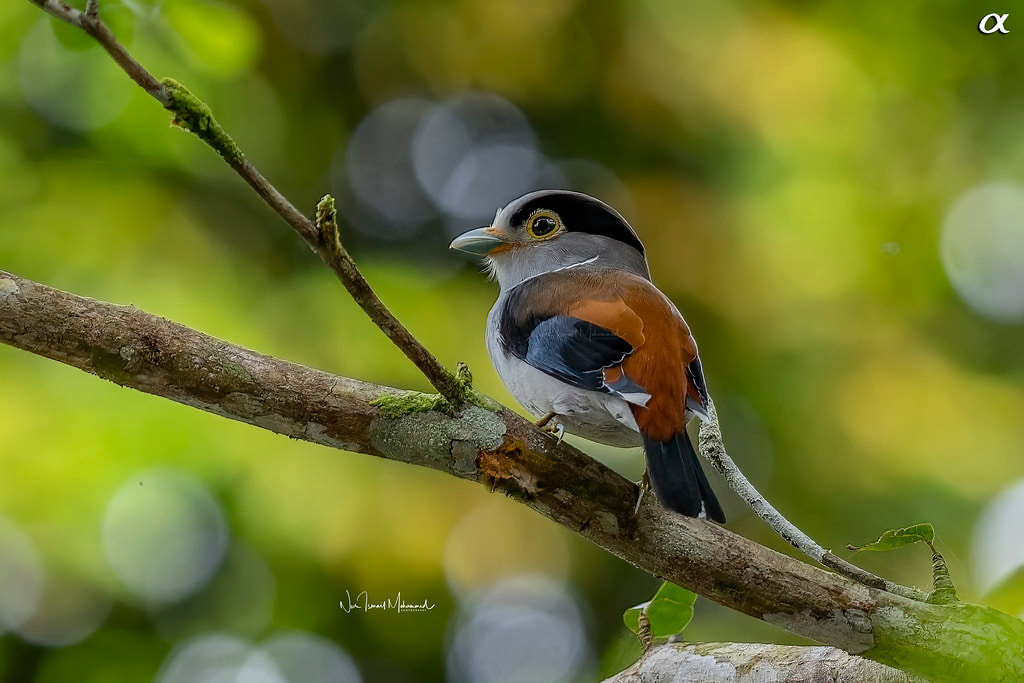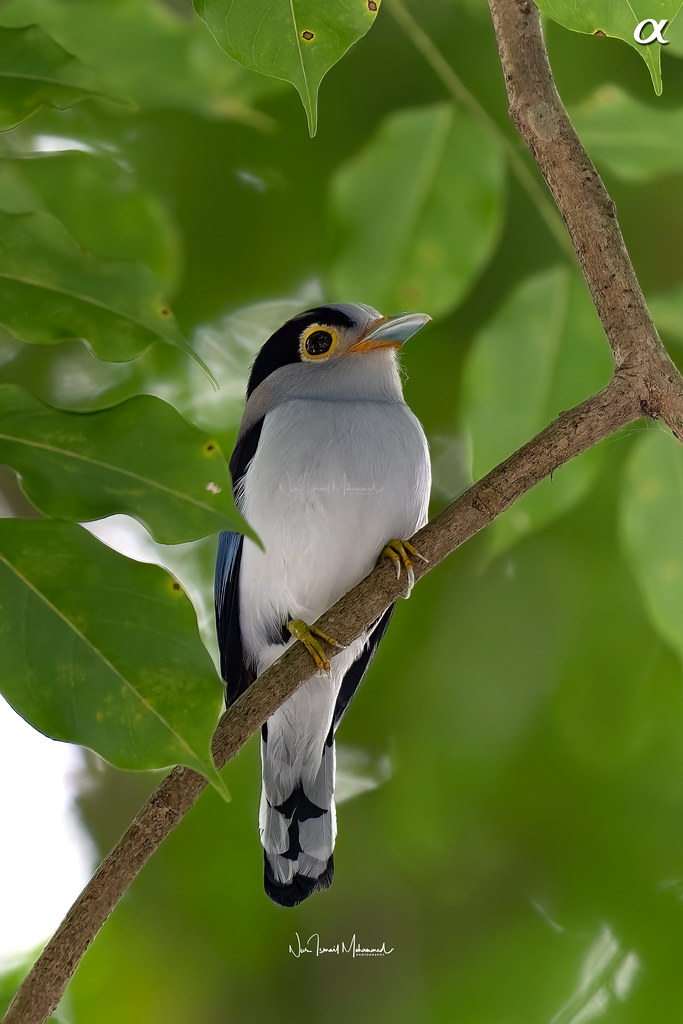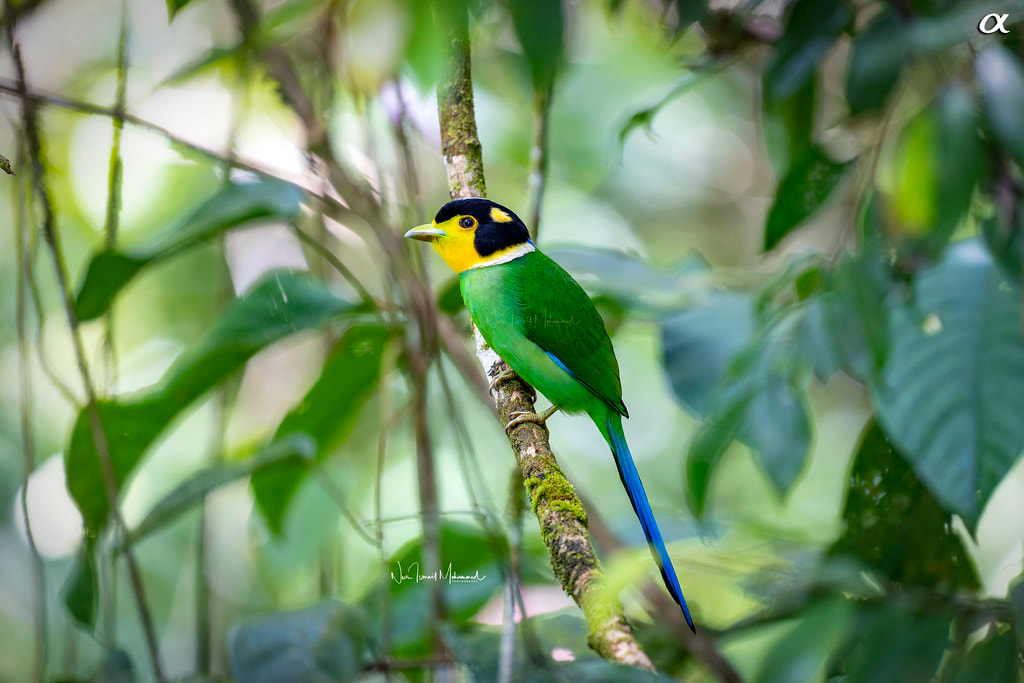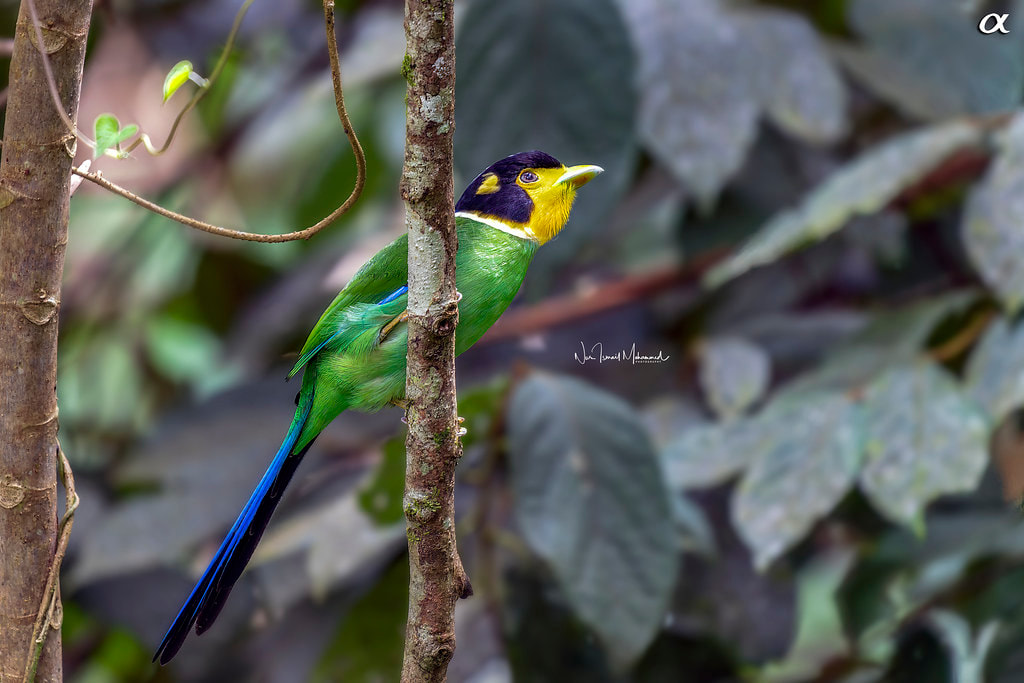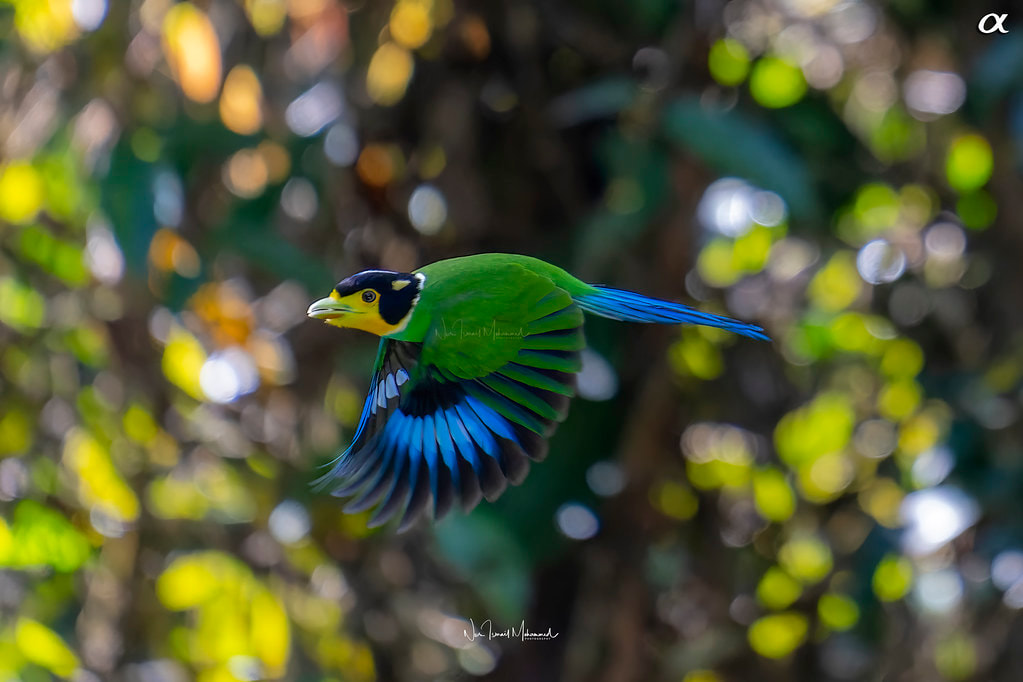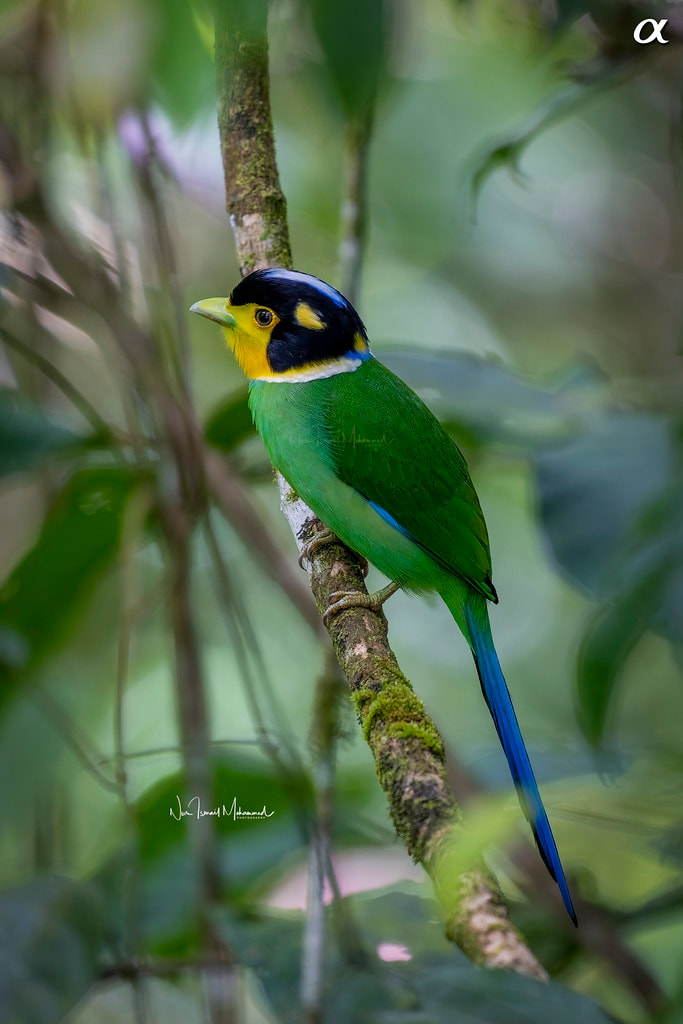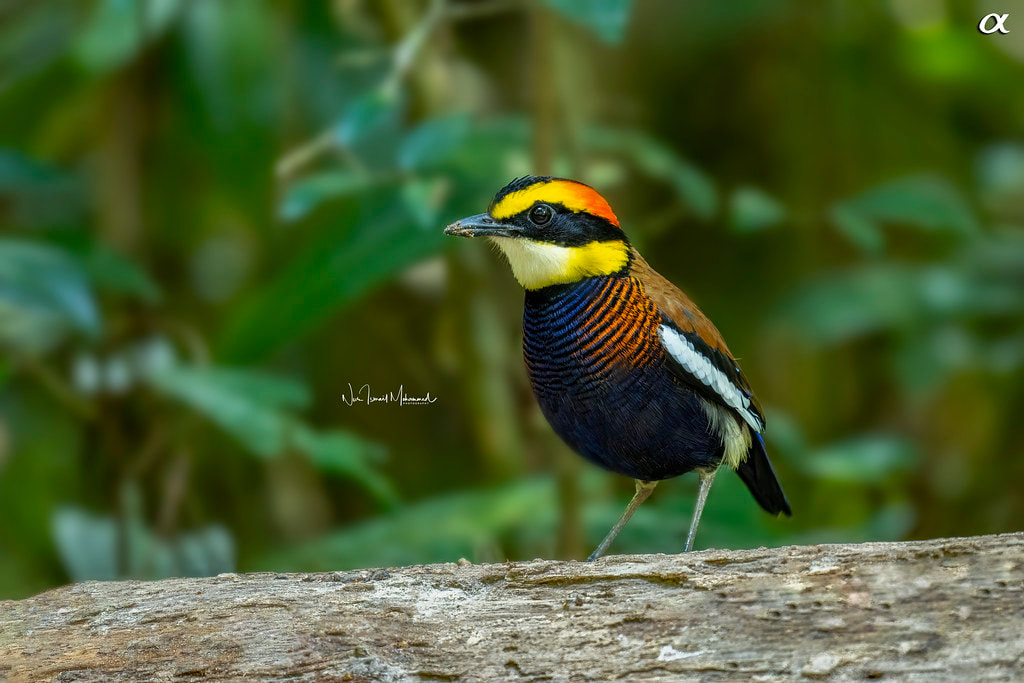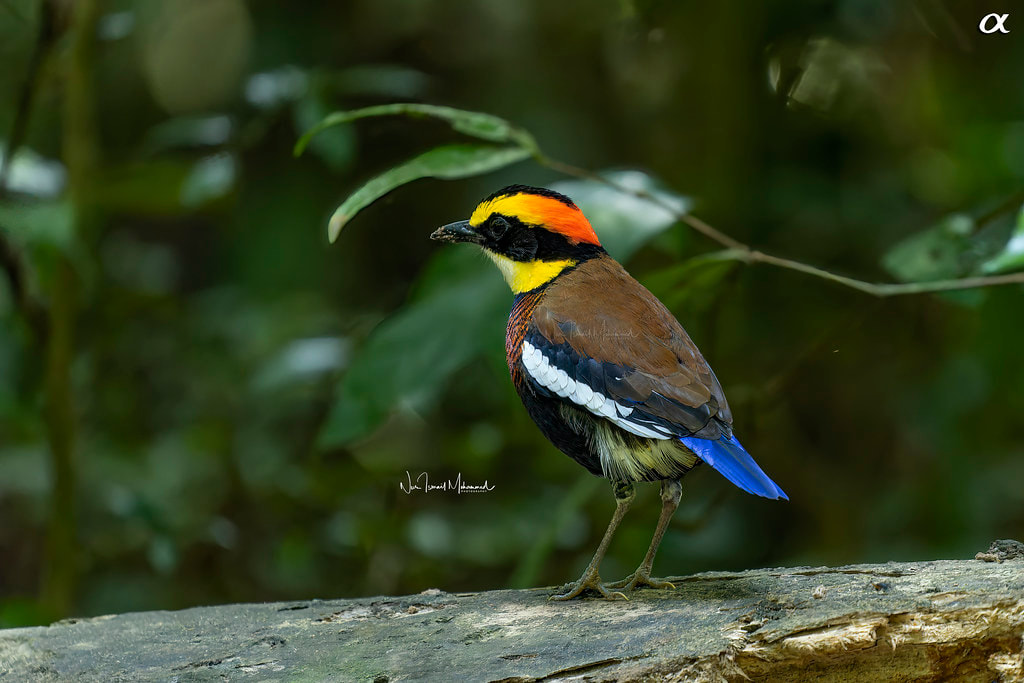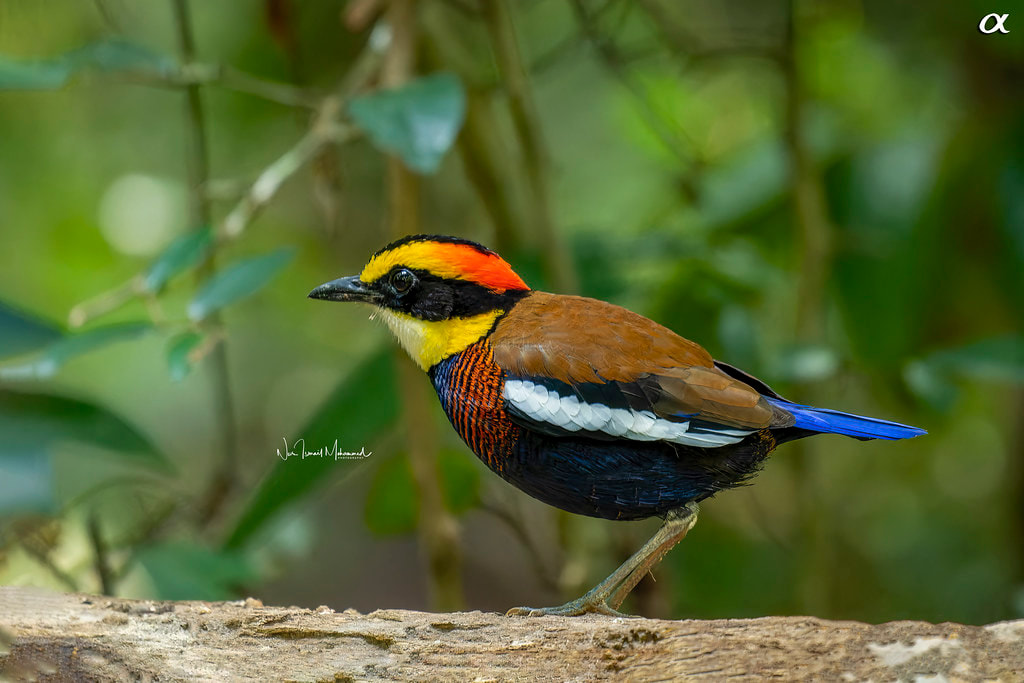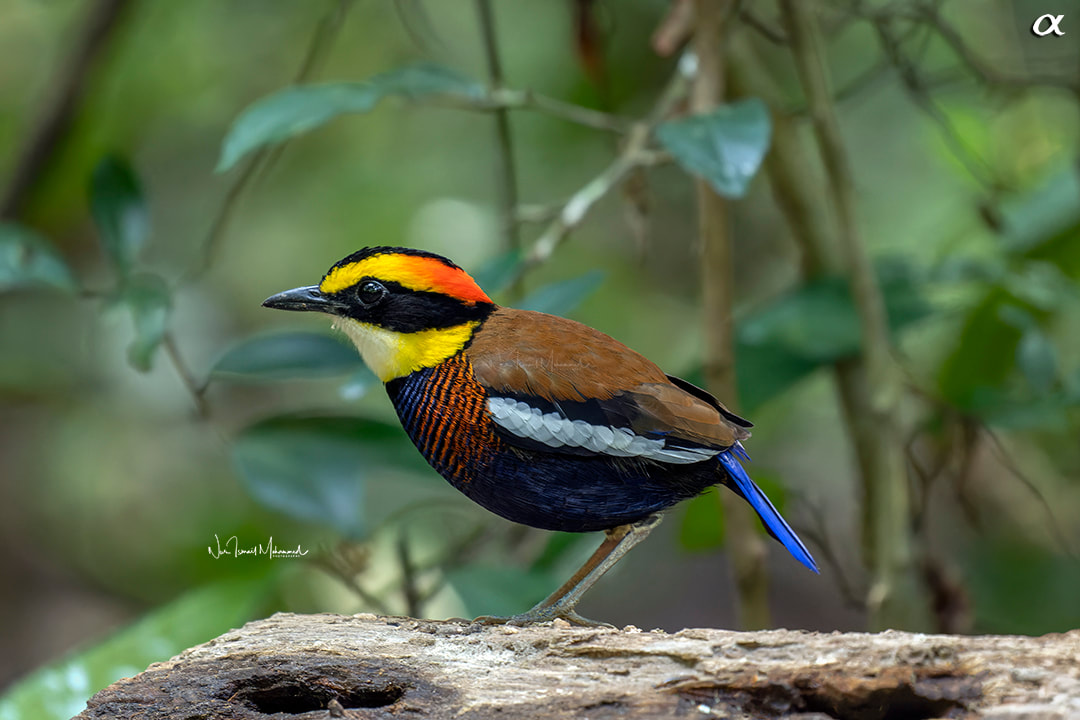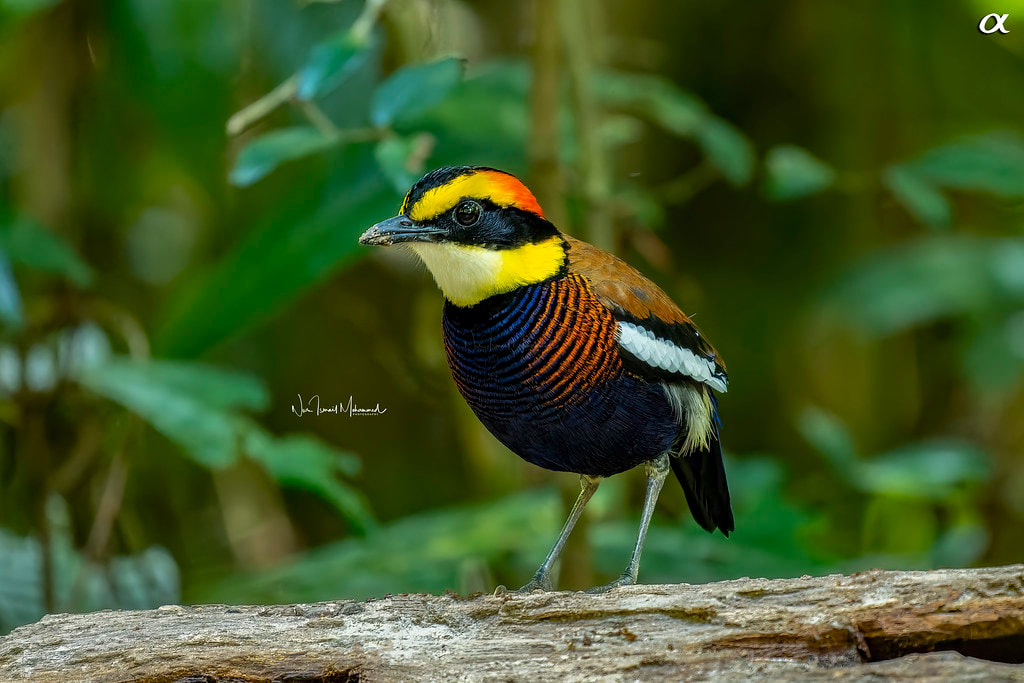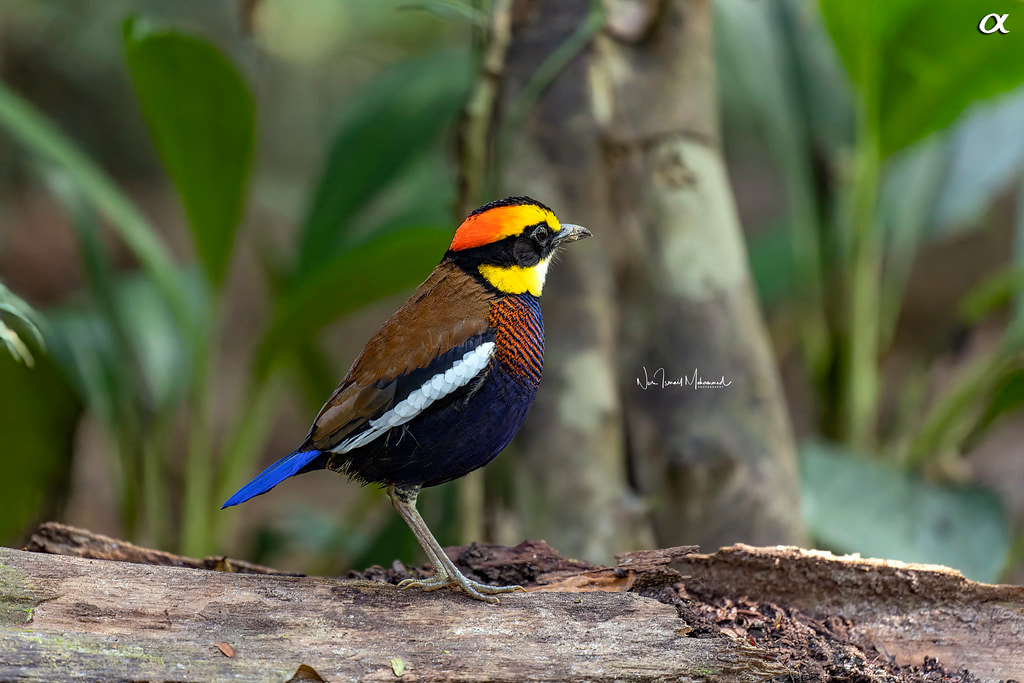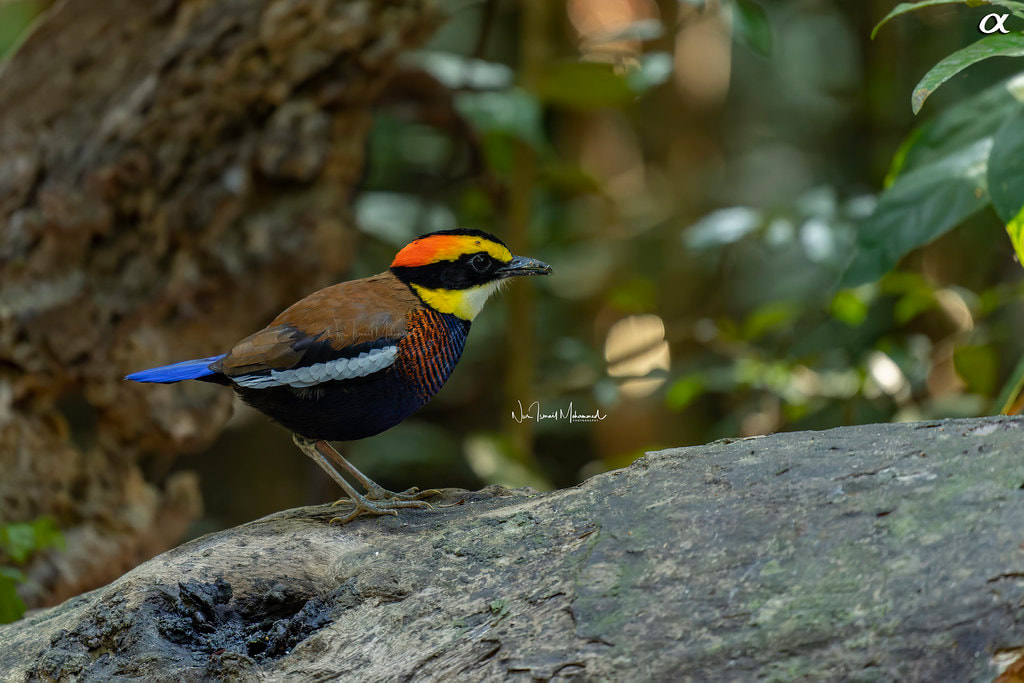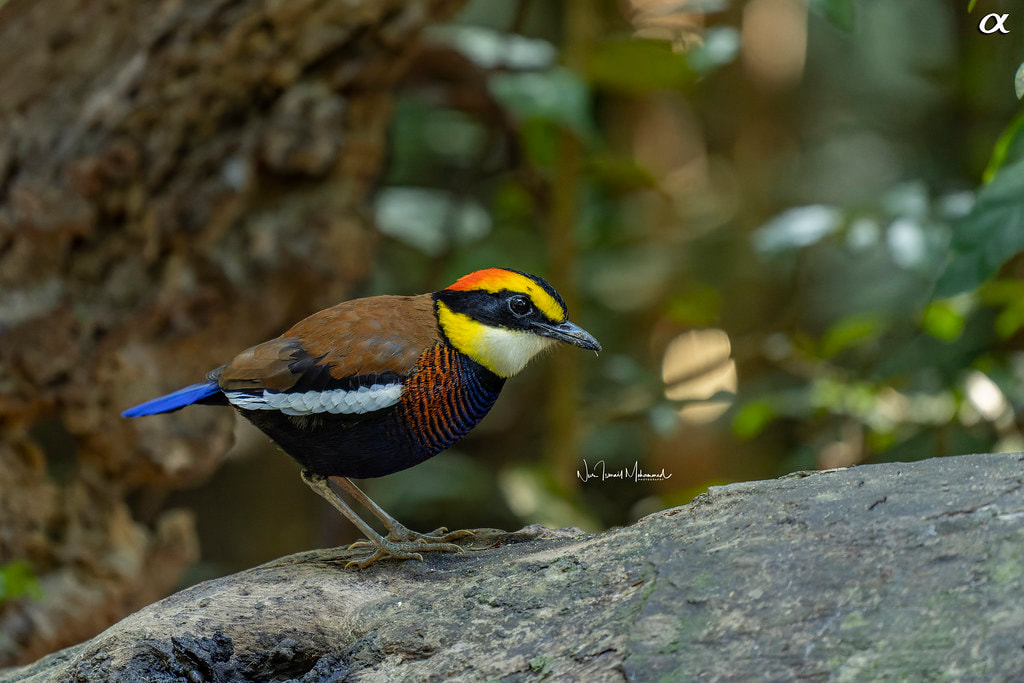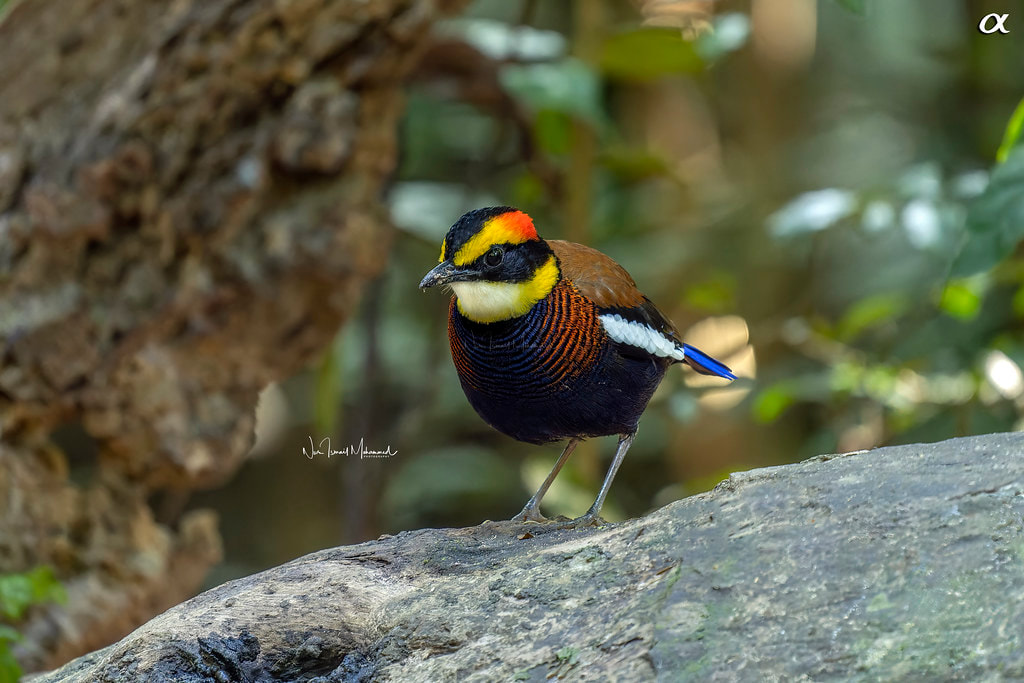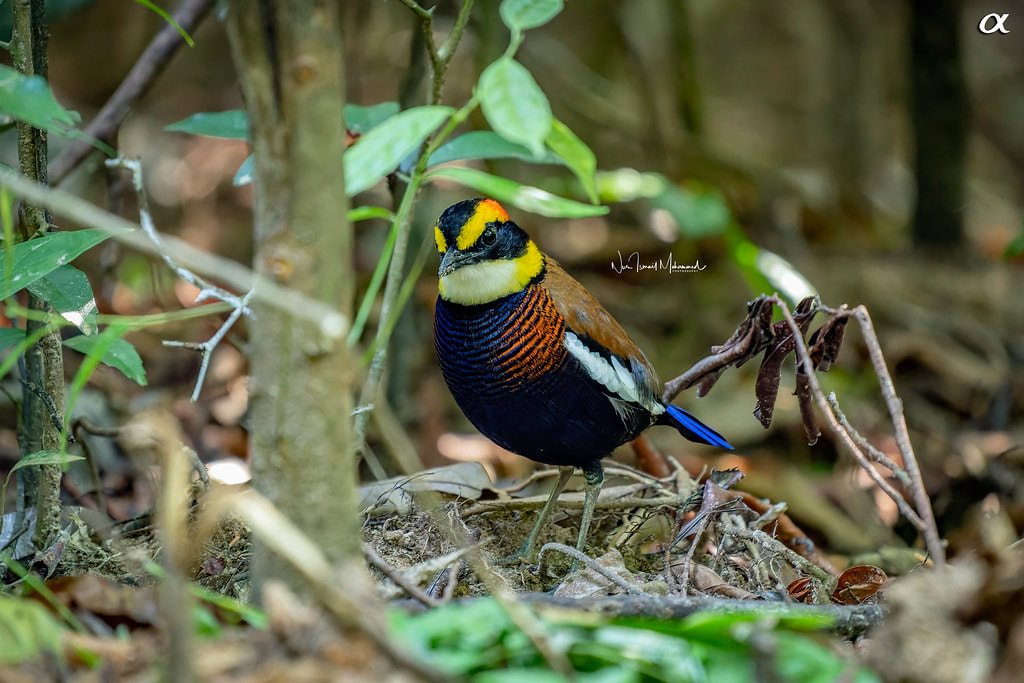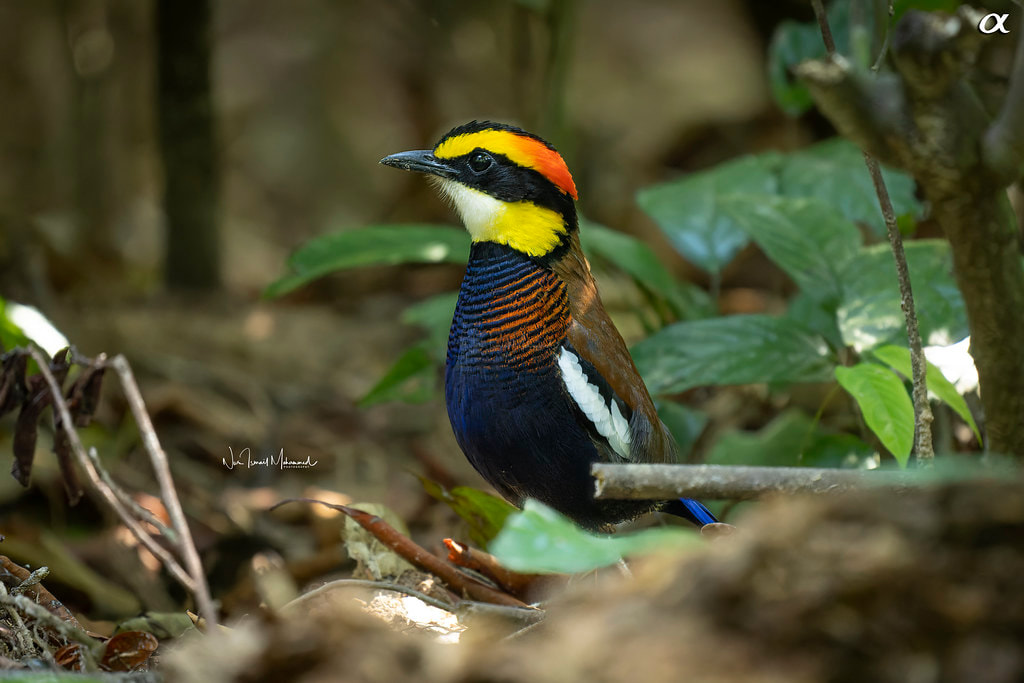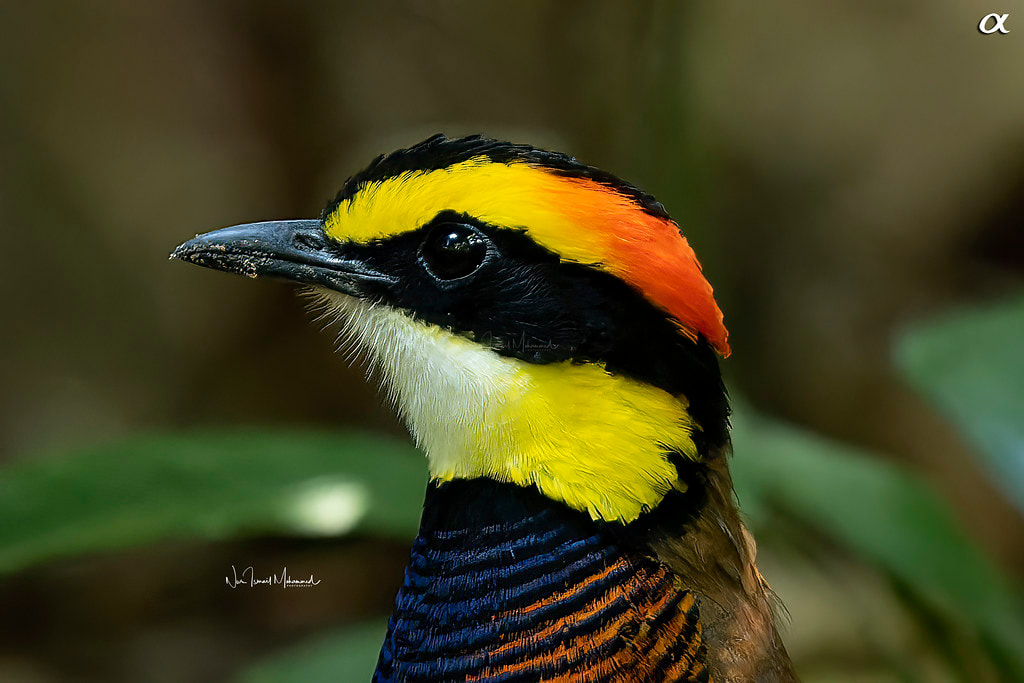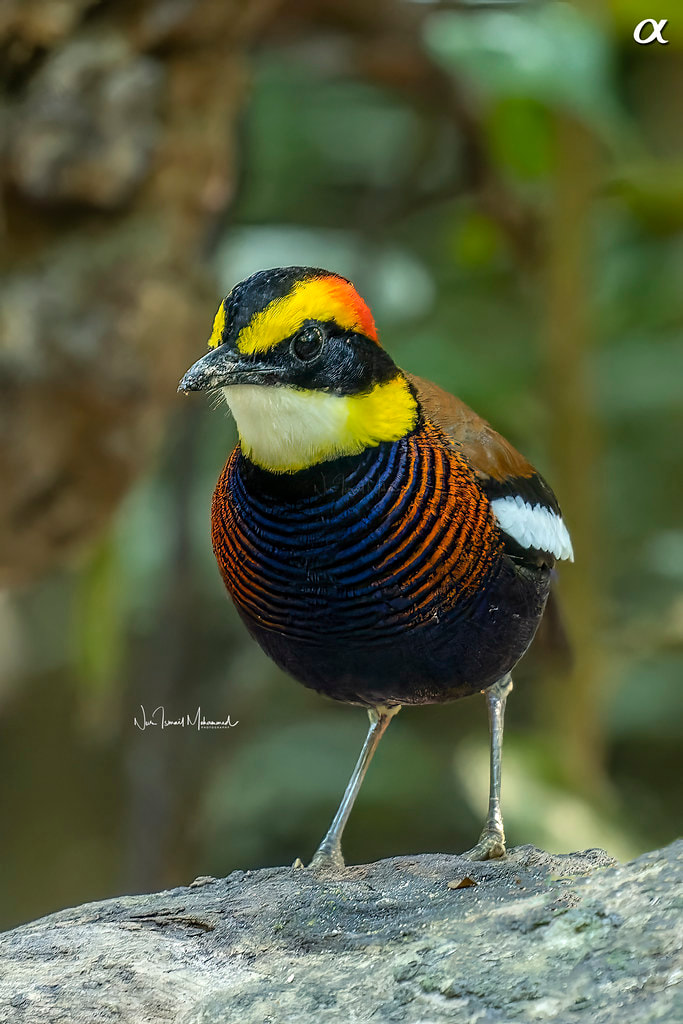|
Assalamualaikum & good day to all. I am truly pleased and humbled that one of my photos was featured in SONY’s Lens Photobook 2022. My special thanks to SONY Malaysia for their endless support and look forward for more collaborations in the future. #NurIsmailPhotography #sony #sonymalaysia #a1 #α1 #SEL200600G #SEL14TC #alpha #AlphaGuru #SAG #Fight4ourPlanet #DiscoverWithMYAlpha #DiscoverWithAlpha #AlphaUniverseMY #FullFrameLife #MySONYLife
0 Comments
Serilophus lunatus is a bird species from the broadbill family that is commonly known as Silver-breasted broadbill. This medium-sized bird measures about 16-17 cm in length and like to consume invertebrates, primarily insects such as grasshoppers, mantises, caterpillars, larvae and small land snails. It is found in the montane forest up to about 800-1,600 m, in the middle storey and forest edges. The Silver-breasted broadbill is monotypic as it is the only species within the genus Serilophus. It has a rusty-coloured head with an ash-grey forehead and a broad black supercilium (stripe) over its eyes. It also has white underpart, brilliant blue and yellow bill, black tail, bright rufous at the rump and upper wing coverts; and striking blue and black flight feathers. The female's appearance is similar to the male but with a narrow silvery white band across its breast, while the juvenile is slightly different and has shorter wings and tails with slightly darker plumage overall. [Source: MyBIS] Name: Silver-breasted broadbill Scientific: Serilophus lunatus Malay: Burung Tadah Hujan / Takau Dada-perak / Takau Tanda Hujan Family: Eurylaimidae IUCN Red List (v3.1, 2016): Least Concern Gear: SONY α1 + SEL200600G Location: Hulu Langat, Selangor, Malaysia #NurIsmailPhotography #sony #sonymalaysia #a1 #α1 #SEL200600G #alpha #AlphaGuru #SAG #DXO #PureRAW #topazlabs #leofoto #pg1 #Fight4ourPlanet #DiscoverWithMYAlpha #DiscoverWithAlpha #AlphaUniverseMY #FullFrameLife #MySONYLife
Copyright © 2022 Nur Ismail Photography. All rights reserved. Do not use or reproduce these images on websites, blogs or publications without expressed written permission from the photographer. For any enquiries, please visit my website: www.nurismailphotography.com or email at [email protected]. Flickr: www.flickr.com/photos/nurismailphotography/ Psarisomus dalhousiae is the only species of the genus Psarisomus. Commonly known as Long-tailed broadbill, P. dalhousiae is a species of passerine birds that measuring about 25 cm in length and can be found in montane forests from about 800-2,000 m, in the canopy and middle storeys. This species normally travel in large, noisy groups except during mating seasons. The adult of Long-tailed broadbills has a brilliant green body with yellow face and throat, a bright yellowish-green bill, black cap and a blue crown and nape, and lime-coloured ear tufts. This species also has black wings with large blue patches that appear white when seen from below and long graduated blue tail. While the juveniles have a similar appearance to adults but are duller with a green head. [Source: MyBIS] The long-tailed broadbill is a forest bird that lives on insects. It is very sociable and normally travels in large, noisy parties except during the mating season. It builds a pear-shaped nest in a tree. The female usually lays between 5 and 6 eggs that are incubated by both sexes; both sexes also help to feed the young. The long-tailed broadbill is found in the Himalayas and Myanmar and discontinuously found through South-East Asia and the Malay Peninsula to Sumatra and Borneo. They are distributed in a variety of countries: India, Nepal, Bhutan, Myanmar, Thailand, Cambodia, Laos, Vietnam, China, Malaysia and Indonesia. They are commonly found in broad-leaved evergreen forests, ranging in altitudes from 150 to 2500 meters. Their natural habitats include: forests, streams and creeks, tropical and subtropical moist lowland forests, tropical and subtropical moist mountain forests. They seem to have a habitat preference nears small bodies of water such as streams, freshwater and wetlands. They are resident, non-migratory species. The populations of long-tailed broadbills that live in the higher altitudes of the Himalayas often move down to lower altitudes during cold winter months. The long-tailed broadbill's call is a series of loud, sharp, downward-inflected whistles, "pseeu..pseeu..pseeu" and "tseeay..tseeay" sounds on a descending scale. They may also make a sharp rasping "pseeup" sound. [Source: Wikipedia] Name: Long-tailed broadbill Scientific: Psarisomus dalhousiae Malay: Takau Ekor Panjag / Takau Injap Family: Eurylaimidae IUCN Red List (v3.1, 2016): Least Concern Gear: SONY α1 + SEL200600G Location: Pahang, Malaysia #NurIsmailPhotography #sony #sonymalaysia #a1 #α1 #SEL200600G #alpha #AlphaGuru #SAG #DXO #PureRAW #topazlabs #leofoto #pg1 #Fight4ourPlanet #DiscoverWithMYAlpha #DiscoverWithAlpha #AlphaUniverseMY #FullFrameLife #MySONYLife
Copyright © 2022 Nur Ismail Photography. All rights reserved. Do not use or reproduce these images on websites, blogs or publications without expressed written permission from the photographer. For any enquiries, please visit my website: www.nurismailphotography.com or email at [email protected]. Flickr: www.flickr.com/photos/nurismailphotography/ The puff-throated babbler or spotted babbler (Pellorneum ruficeps) is a species of passerine bird found in Asia. They are found in scrub and moist forest mainly in hilly regions. They forage in small groups on the forest floor, turning around leaf litter to find their prey and usually staying low in the undergrowth where they can be hard to spot. They however have loud and distinct calls, including a morning song, contact and alarm calls. It is the type species of the genus Pellorneum which may however currently include multiple lineages. Puff-throated babblers are brown above, and white below with heavily brown streaks towards the breast and belly. They have a chestnut crown, long buff supercilium and dusky cheeks. The throat is white, and is sometimes puffed out giving it the English name. Puff-throated babblers have strong legs, and spend a lot of time on the forest floor. They can often be seen creeping through undergrowth in search of their insect food, looking at first glance like a song thrush. Some subspecies have streaks on the mantle while others, especially in Peninsular India, are unstreaked. This bird is a common resident breeder in the Himalayas and the forests of Asia. Like most babblers, it is not migratory, and has short rounded wings and a weak flight. Its habitat is scrub and bamboo thickets and forages by turning over leaves to find insects. Puff-throated babblers vocalize often. Their calls are a series of whistling notes ascending in scale. Some calls have been transcribed as he'll beat you, pret-ty-sweet. The calling can be persistent. The breeding season is mainly during the rainy season. They build a nest on the ground at the base of bush and is a dome of leaves and twigs with an entrance on the side. The opening usually points downhill when the nest is on sloping ground. The clutch varies from 2 to 5 eggs, with northern populations tending towards larger clutches. Parent birds run rodent-like in the undergrowth as they move in and out of the nest. Young birds fledge and leave the nest about 12 to 13 days after hatching. [Source: Wifipedia] Name: Puff-throated babbler Scientific: Pellorneum ruficeps Malay: Kekicau Tekak Kembang / Rimba Bintik-bintik Family: Pellorneidae IUCN Red List (v3.1, 2016): Least Concern Gear: SONY α1 + SEL200600G Location: Kedah, Malaysia #NurIsmailPhotography #sony #sonymalaysia #a1 #α1 #SEL200600G #alpha #AlphaGuru #SAG #DXO #PureRAW #topazlabs #leofoto #pg1 #Fight4ourPlanet #DiscoverWithMYAlpha #DiscoverWithAlpha #AlphaUniverseMY #FullFrameLife #MySONYLife
Copyright © 2022 Nur Ismail Photography. All rights reserved. Do not use or reproduce these images on websites, blogs or publications without expressed written permission from the photographer. For any enquiries, please visit my website: www.nurismailphotography.com or email at [email protected]. Flickr: www.flickr.com/photos/nurismailphotography/ Banded pitta, scientifically known as Hydrornis irena is belongs to the family Pittidae. It can grow up to 23 cm. Both sexes have a clearly visible broad yellow supercilium which grades into the deep orange on the nape. They are also have a black central crown stripe, broad eye lines, a golden brown mantle, deep blue tail, white streaks on its wings and throat with a yellowish tinge on the sides of its neck. To differentiate both sexes, the male entire underparts are covered by dark blue with orange bands across the breast. Meanwhile, the female entire underparts are marked with narrower buff brown and black bands. H. irena forages in the ground storeys either singly or in pairs. This species is locally common at low elevations found in the Malay Peninsula, Sumatra, Borneo, and Java. [Source: MyBis] During the recent Chinese New Year holidays, I've made a trip to Kedah with my close friend Dr. Shaharudin Abdullah from Kuala Terengganu, to photograph the beautiful Malayan banded pitta. I was at the location for two days i.e. 1/2/2022 and 2/2/2022 and thankfully, managed to photograph the pitta on both days. Looking at it for the first time with our own eyes gave us the sense of awe to be able to witness such a beautiful bird. Only the male pitta came out to feed on the meal worms. Female pitta never showed up. I am pretty sure this will not be the last visit to Kedah. There are other target birds that I didn't manage to photograph, like the chestnut-necklaced partridge, Blyth's frogmouth and white-crowned hornbill. It was unfortunate that the bird guide that we have booked, decided not to guide us a week before my trip, for whatever reason. So, being the first time birding in Kedah, I could not get all the target birds that I wanted. Luckily, a nice gentleman helped me to find the pitta port. In sya Allah, I'll be back there again, with a proper bird guide! Name: Malayan banded pitta (male) Scientific: Hydrornis irena Malay: Burung Pacat Belang Malaya / Burung Pacat Berjalur Family: Pittidae IUCN Red List (v3.1, 2016): Near Threatened Gear: SONY α1 + SEL200600G Lokasi: Kedah #NurIsmailPhotography #sony #sonymalaysia #a1 #α1 #SEL200600G #alpha #AlphaGuru #SAG #DXO #PureRAW #topazlabs #leofoto #pg1 #Fight4ourPlanet #DiscoverWithMYAlpha #DiscoverWithAlpha #AlphaUniverseMY #FullFrameLife #MySONYLife
Copyright © 2022 Nur Ismail Photography. All rights reserved. Do not use or reproduce these images on websites, blogs or publications without expressed written permission from the photographer. For any enquiries, please visit my website: www.nurismailphotography.com or email at [email protected]. Flickr: www.flickr.com/photos/nurismailphotography/ |
AuthorThis is the photography journey of Nur Ismail Photography where all the experiences from this year onwards will be shared with the audience. In collaboration with NiSi Malaysia, Leofoto, SONY Malaysia and Skylum Software. Thanks for viewing! Archives
August 2022
Categories |
